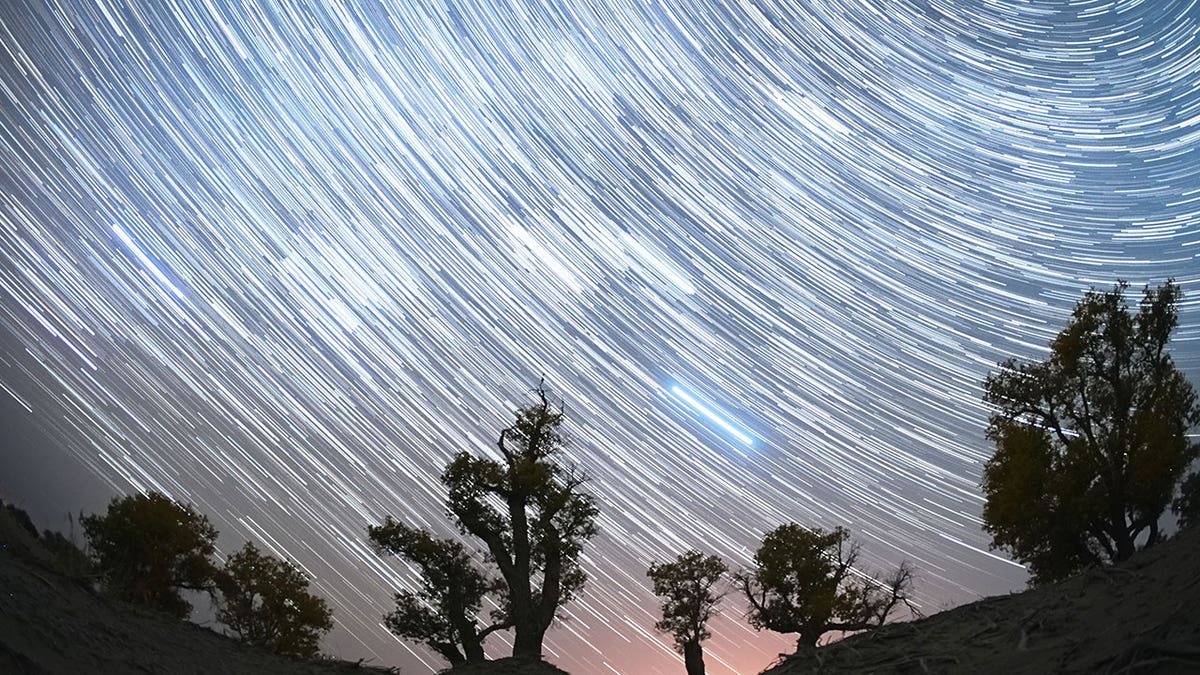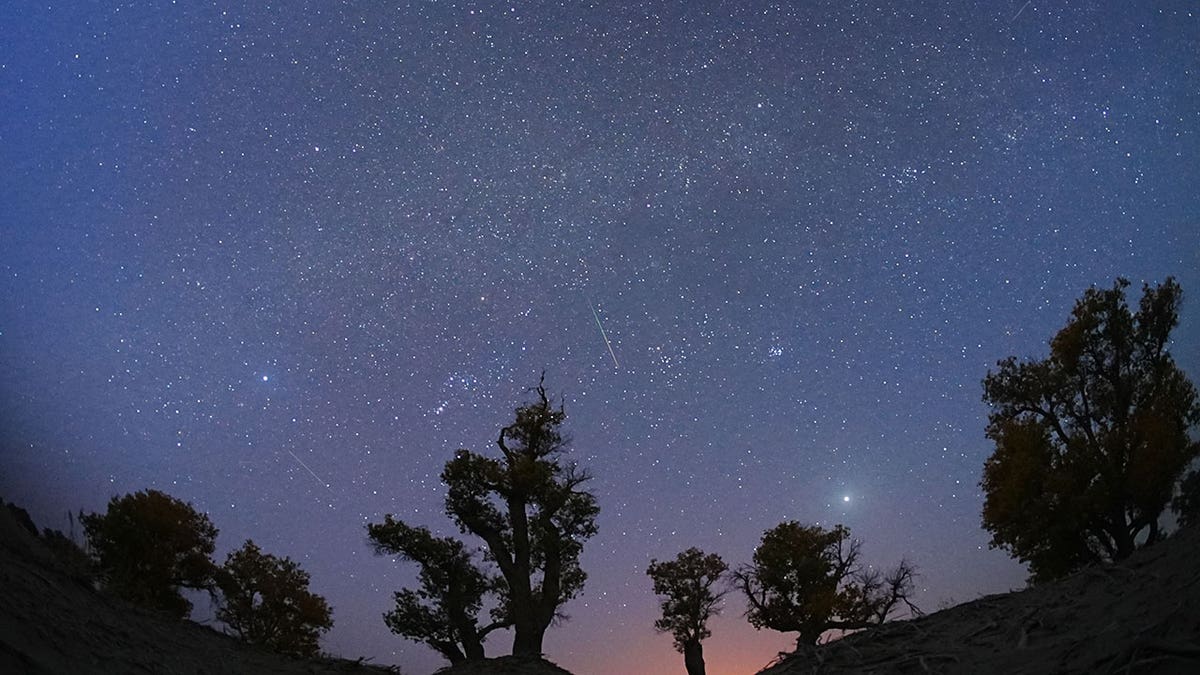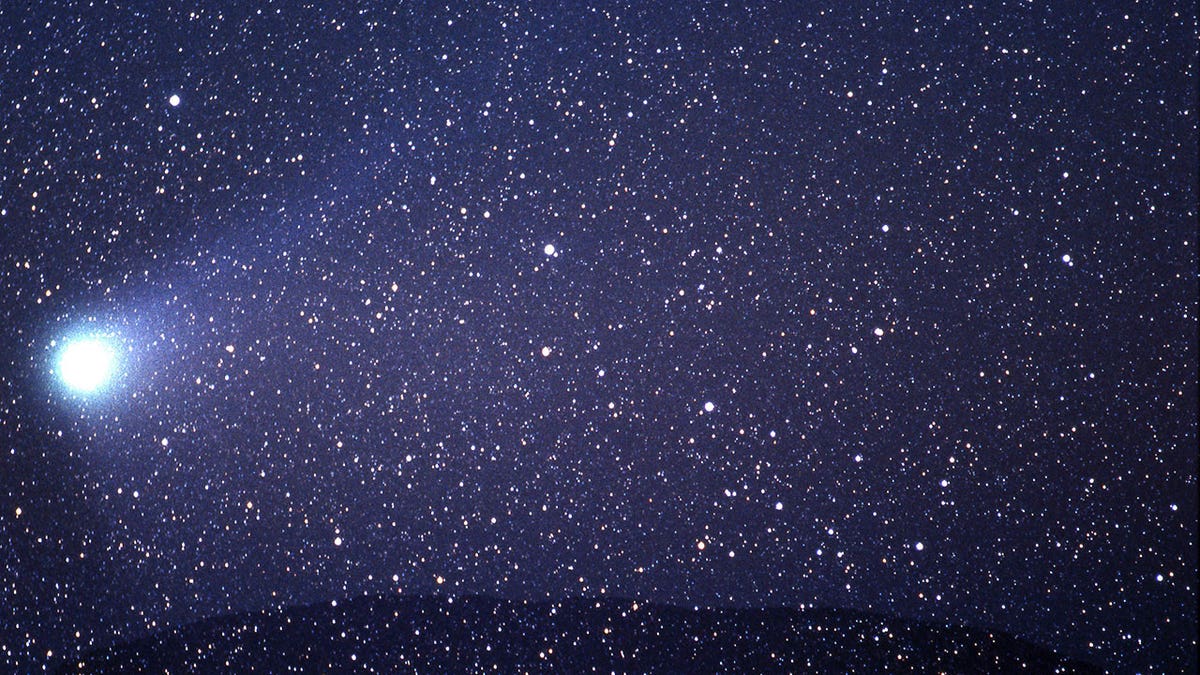The Orionids meteor shower, which is considered to be one of the most beautiful showers of the year, could light up the sky with shooting stars through most of next month.
NASA said the Orionids peak during mid-October every year, and the meteors are known for their brightness and speed.
The ability to see the shooting stars depends on clear nighttime skies, as a bright waning gibbous moon moves between full and last quarter phases, outshining more faint meteors and reducing the number of meteors visible to sky-gazers.
According to NASA, some of the Orionids leave behind glowing “trains,” or incandescent bits of debris in the wake of the meteor, which could last up to several minutes, and some faster meteors could also become fireballs.
NASA SPACECRAFT TO SCOUR JUPITER’S ICY MOON IN SEARCH OF LIFE-SUPPORTING CONDITIONS

Orionid meteor shower lights up the night sky over a desert on Oct. 22, 2023, in Yuli County, Bayingolin Mongol Autonomous Prefecture, Xinjiang Uygur Autonomous Region, China. (VCG/VCG via Getty Images)
The Orionids meteors are pieces of the Halley’s Comet and are framed by some of the brightest stars in the night sky.
“Each time that Halley returns to the inner solar system, its nucleus sheds ice and rocky dust into space. These dust grains eventually become the Orionids in October and the Eta Aquarids in May if they collide with Earth’s atmosphere,” NASA said.
At the meteor shower’s peak, which is scheduled for Monday, skywatchers could see up to 15 meteors per hour, depending on where they are in the Northern Hemisphere.
NASA RELEASES CLEAREST VIEW OF MARS, BLUE ROCKS SEEN ON LANDSCAPE

Meteors streak across the sky over a desert during the Orionid meteor shower on October 22, 2023, in Yuli County, China. (VCG/VCG via Getty Images)
While clear skies are important, the second most crucial viewing condition is a dark sky away from light pollution.
Bill Cooke, who leads NASA’s Meteoroid Environment Office at Marshall Space Flight Center in Huntsville, Alabama, suggests budding skywatchers find an area away from city lights.
“Come prepared with a blanket. Lie flat on your back and look up, taking in as much of the sky as possible,” he said on NASA’s site. “In less than 30 minutes in the dark, your eyes will adapt, and you will begin to see meteors.”
SPACEX LAUNCHES MISSION TO SPACE STATION THAT WILL BRING BACK STRANDED NASA ASTRONAUTS NEXT YEAR

Halley’s Comet over Uluru, outback Australia, 1986. (Impressions Photography/Getty Images)
NASA says the Orionids are viewable in both the Northern and Southern Hemispheres during the hours after midnight until dawn.
While the Orionids meteor shower peak is on Oct. 21, the Orionids will be active through Nov. 22.
CLICK HERE TO GET THE FOX NEWS APP
It takes Halley’s Comet 76 years to orbit the sun, and the last time it was visible to casual astronomers was in 1986. The comet is not expected to enter the inner solar system again until 2061, NASA said.
